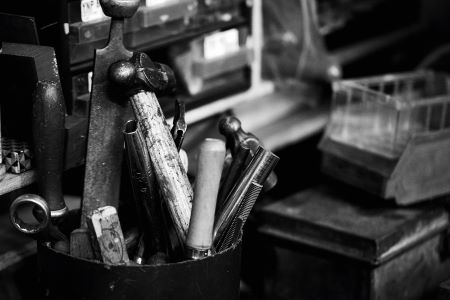A well-equipped workspace makes jewellery making smoother, more enjoyable, and more precise. These ten essential tools cover forming, shaping, cutting, soldering and finishing, everything needed to bring a design to life with control and confidence.
1. Pliers Set
A solid set of pliers is the backbone of many jewellery making techniques. Each type has a specific role:
- Snipe Nose Pliers offer precision for gripping and bending in tight spaces.
- Flat Nose Pliers provide strength for holding and forming metal without leaving marks.
- Round Nose Pliers are essential for creating smooth loops and curves in wirework.
- Half Round Pliers allow shaping curves while maintaining a flat side for better control.
- Side Cutters give clean, accurate cuts in wire without fraying or crushing the ends.
This set enables everything from making jump rings and earring hooks to forming intricate wire details
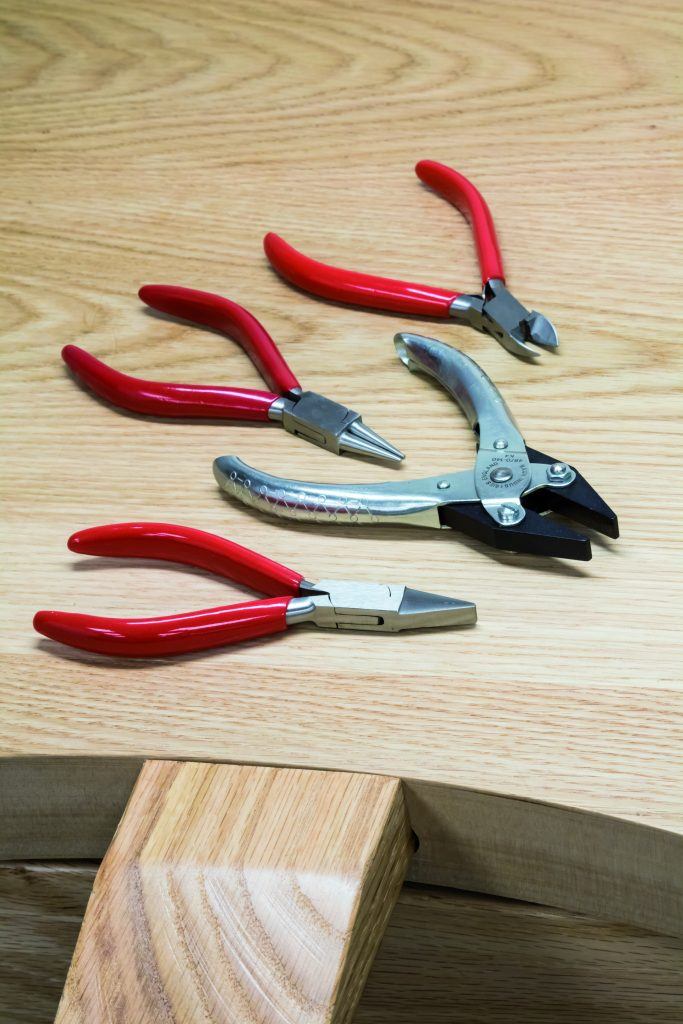
2. Bench Peg
The bench peg is a reliable surface for sawing, filing and shaping. Mounted to a bench or clamp, it provides stability and support. The v-cut notch allows easy access to your piece, keeping it steady for detailed processes.
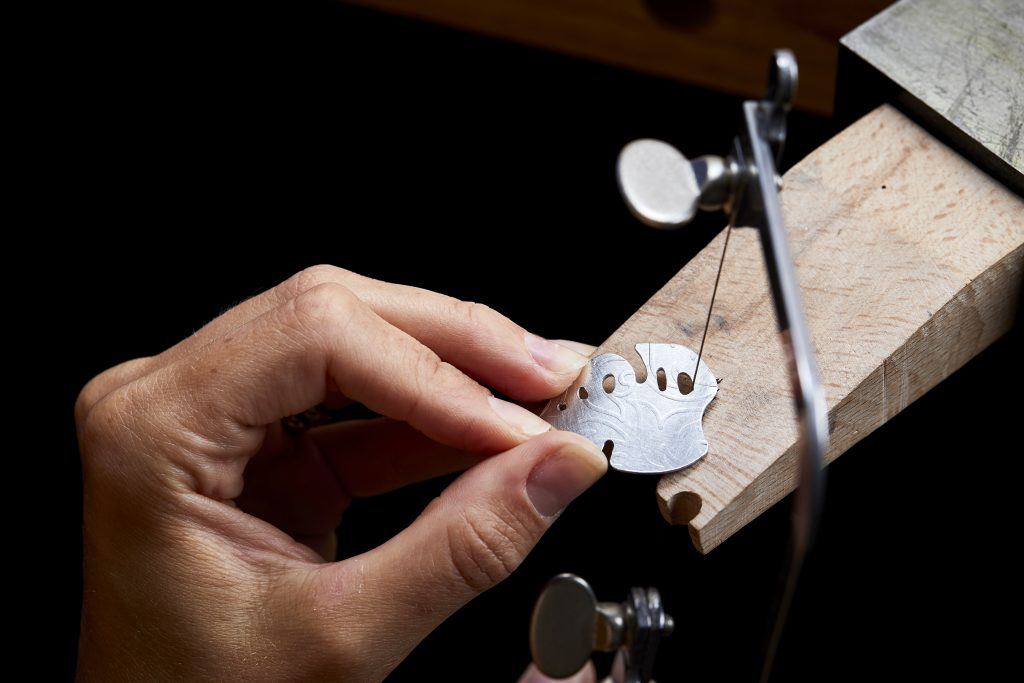
3. Saw Frame and Saw Blades
A saw frame fitted with fine blades makes for more accurate cutting. It allows tight curves, intricate shapes and internal cut-outs in sheet metal. Combined with a bench peg, it forms a dependable setup for cutting patterns or trimming forms.
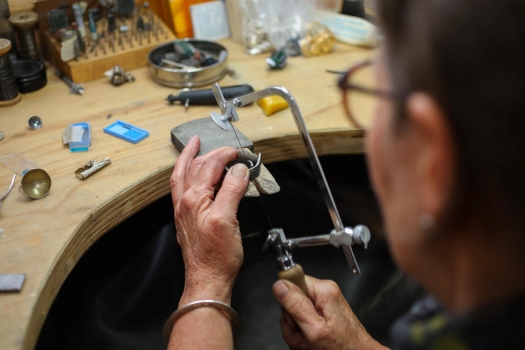
4. Emery Stick Set
Emery sticks help smooth and refine surfaces before polishing. The set usually includes rectangular, half round, round and triangle profiles, each suited to different contours and edges. These abrasives remove scratches, clean up joins and prepare surfaces for a professional finish.
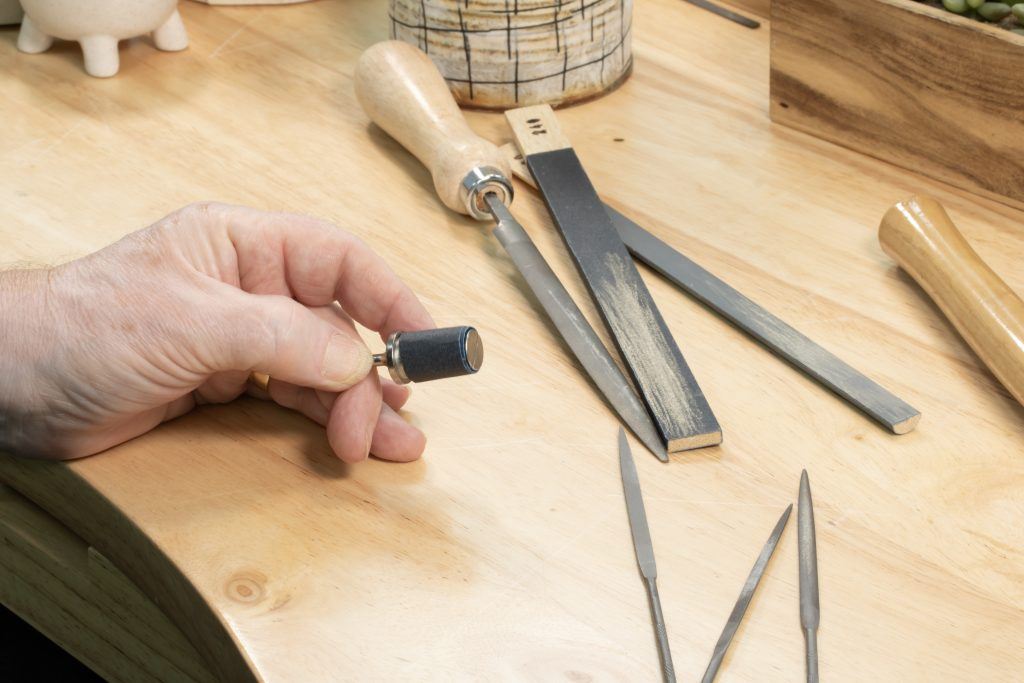
5. Straight Shears
Cutting metal sheet cleanly starts with a good pair of straight shears. These are made to handle soft metals like silver or copper with accuracy. Ideal for trimming sheet down to size or preparing blanks before more detailed work begins.
6. Mallet
A mallet is useful for shaping metal without leaving marks. Unlike a hammer, it doesn’t texture or dent the surface. Nylon and rawhide mallets are especially useful when forming curves or flattening shapes that need a clean surface.
7. Triblet
A triblet, or ring mandrel, provides a solid steel surface for forming circular shapes. It supports consistent shaping and resizing. The tapered form makes it easy to work to standard sizes for rings and other round forms.
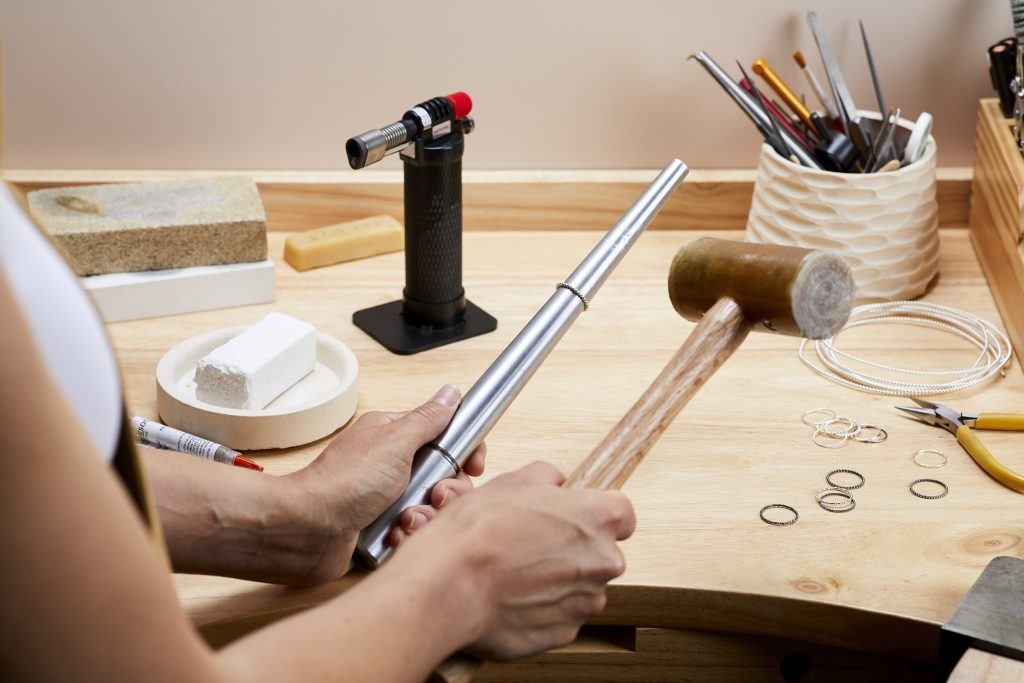
8. Blow Torch
The blow torch is essential for soldering, annealing and heat treating metal. It delivers controlled heat where it’s needed, supporting everything from joining to softening metal for further forming. A small, reliable torch is a key part of the soldering setup.
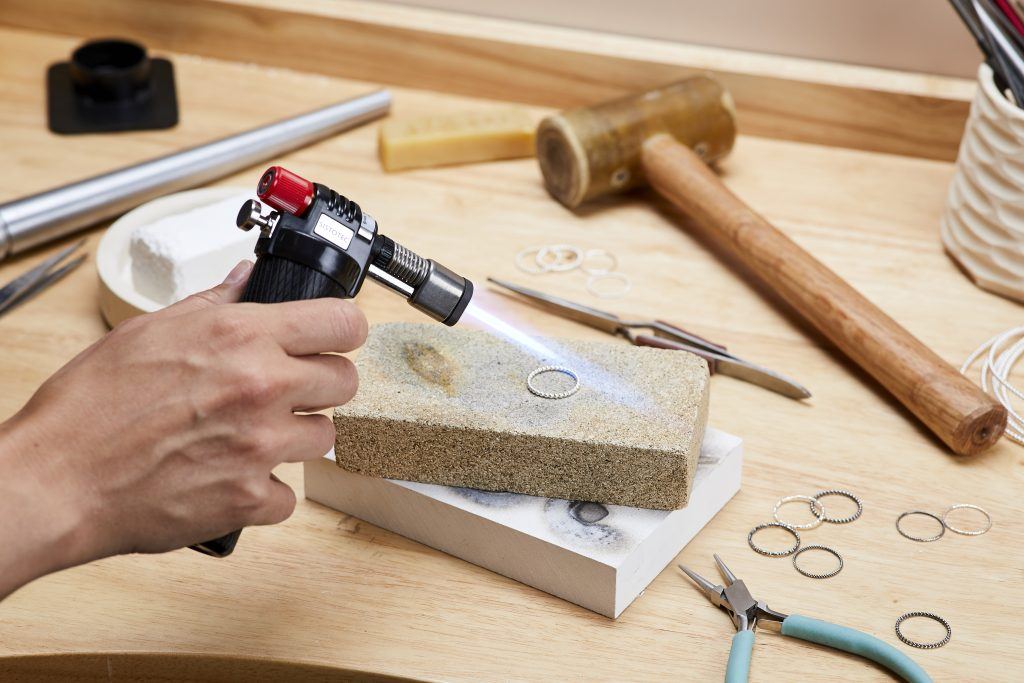
9. Soldering Block
A soldering block gives you a heat-resistant surface for working with a flame. It protects your workspace and reflects heat efficiently, helping solder flow cleanly and evenly across joins.
10. Steel Tweezers
Steel tweezers give control when placing small elements, positioning solder, or adjusting heated components. They allow precision without disturbing the rest of the setup — especially important during soldering or when handling delicate fittings.
Each of these tools plays a specific role in the jewellery-making process — from forming and cutting to soldering and finishing. Having the right setup improves accuracy, saves time, and makes it easier to achieve a consistent standard of work. A reliable toolkit supports both day-to-day tasks and more technical projects.

Sian Brown
Sian has been hand making her award winning jewellery in the West Midlands for over 12 years. Sian spent 10 years in Birmingham’s historic Jewellery Quarter before relocating to a quiet Worcestershire village.

